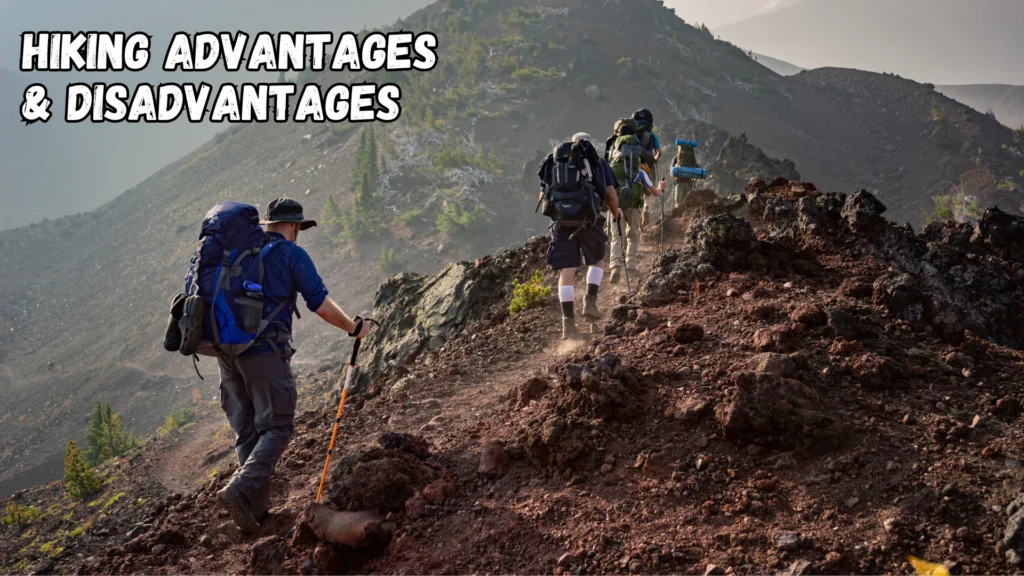Embarking on your first thru-hike? Here are 21 pro tips to ensure a successful and enjoyable journey.
Whether you’re tackling the Pacific Crest Trail or the Appalachian Trail, these tips will help you navigate the challenges of long-distance hiking and make the most of this unforgettable experience. From gear selection to physical preparation, this article covers everything you need to know to make your first thru-hike a resounding success.
So, lace up your boots and get ready for an adventure of a lifetime!
Preparing For The Trail
Preparing for the Trail is crucial for a successful thru-hike adventure. Follow these 21 Pro Tips to ensure a smooth and enjoyable journey in the great outdoors.
Choose The Right Trail
Selecting the right trail for your skill level and preferences is key. Consider factors like distance, terrain, and difficulty level before making your choice.
Get Fit For The Hike
Getting in optimal physical shape will make your thru-hike experience more enjoyable. Focus on endurance, strength, and flexibility training in your fitness regimen.
Research Trail Regulations
- Learn and adhere to trail regulations to protect the environment and ensure your safety.
- Obtain necessary permits and familiarize yourself with camping and fire regulations along the trail.
- Respect wildlife and plant life by following Leave No Trace principles.
A thru-hiking guide to pacific crest trail
Gearing Up
Heading off on your first thru-hike adventure can be both thrilling and overwhelming. When it comes to Gearing Up, it’s crucial to invest in quality gear, pack light, and test your equipment beforehand.
Invest In Quality Gear
Quality gear can make or break your thru-hiking experience. Before investing, do thorough research to ensure your gear is durable and reliable. Look for top-rated brands known for producing high-quality products.
Pack Light
Packing light is essential for a successful thru-hike. Prioritize essential items and leave behind unnecessary gear. Consider the weight and multi-functionality of each item to reduce unnecessary load.
Test Your Equipment
Testing your equipment before hitting the trail is non-negotiable. Make sure all your gear, including your backpack, shoes, and tent, functions as expected. This pre-hike testing can prevent potential issues later on.
Training And Conditioning
Training and conditioning are essential for any first-time thru hiker. To embark on a long-distance hike, it is crucial to prepare your body and mind for the physical and mental challenges ahead. This section will provide valuable tips and strategies to help you get in shape for your thru hike.

Start With Shorter Hikes
Beginners should start their training by gradually increasing their hiking distance and difficulty. Start with shorter hikes and gradually build up your endurance. This will allow your body to adapt to the physical demands of hiking.
Shorter hikes, around 3-5 miles, are a great way to kickstart your training. Choose trails that are suitable for beginners, with relatively flat terrain and minimal elevation gain. This will help you get accustomed to walking for longer periods without overexerting yourself.
Gradually Increase Distance And Difficulty
Once you feel comfortable with shorter hikes, it’s time to challenge yourself and gradually increase both the distance and difficulty of your hikes. Push yourself to go a little bit further each time, adding an extra mile or two to your hiking distance.
Introduce more challenging terrain into your hikes, such as hills or uneven surfaces. This will strengthen your muscles and improve your balance and coordination, which are crucial skills for the trail. Don’t be afraid to tackle steeper trails or rocky paths. They will prepare you for the varied terrain you will encounter on your thru hike.
Focus On Strength And Endurance
Strength and endurance are key for a successful thru hike. Focus on strength training exercises that target your legs, core, and upper body. Incorporate exercises like squats, lunges, push-ups, and planks into your fitness routine to build muscular strength and stability.
In addition to strength training, it’s important to work on your endurance. Engage in aerobic activities like running, cycling, or swimming to improve your cardiovascular fitness. Aim for at least 30 minutes of moderate-intensity aerobic exercise, three to four times a week.
Remember, consistency is key. Make sure to establish a regular training schedule and stick to it. This will help your body adapt and get into peak physical condition for your thru hike.
Planning Your Resupply Strategy
If you’re planning a thru hike, one of the most crucial aspects to consider is your resupply strategy. Effectively planning your resupply points and provisions will ensure a successful and enjoyable journey. Here are some key tips to help you plan your resupply strategy for your first thru hike.
Calculate Food And Water Needs
Before setting out on your thru hike, it’s essential to calculate your food and water needs for each leg of your journey. This involves determining the number of days between resupply points and estimating the amount of food and water required for each day. Keep in mind the intensity of the terrain and your personal consumption rates.
Research Resupply Points
Thoroughly research the resupply points along your thru hike route. Identify the locations where you can replenish your food and water supplies. Look for grocery stores, general stores, or other establishments that can provide the necessary provisions. Make a list of the contact information, operating hours, and any limitations on resupply quantities at each point.
Consider Mail Drops
For areas with limited resupply options, consider arranging mail drops. Determine the locations where you can send packages containing essential supplies to yourself along the trail. Be mindful of the lead time required for mail deliveries and plan your resupply schedule accordingly. Keep track of the addresses, shipping guidelines, and pickup procedures for each mail drop location.
Navigating On The Trail
Embarking on your first thru-hike? Check out these 21 expert tips to ensure a successful and enjoyable experience on the trail. From gear selection to navigation strategies, this comprehensive guide will help you navigate the challenges of long-distance hiking with confidence.
When embarking on your first thru hike, one of the essential skills you need to master is navigating on the trail. Having a clear understanding of your surroundings and knowing how to find your way is crucial for a successful and enjoyable hike. In this section, we will explore three key aspects of navigation: using a map and compass, utilizing GPS and smartphone apps, and paying attention to trail markers.
Learn How To Use A Map And Compass
Before heading out on the trail, it is imperative to familiarize yourself with map reading and compass navigation. A map will provide you with a bird’s-eye view of the trail, helping you navigate through various landscapes and terrains. To effectively use a map, start by identifying key landmarks and landmarks around your intended route.
- Always orient the map to match your surroundings by aligning the North arrow with the actual North direction.
- Identify prominent features on the map and compare them to what you see in reality to pinpoint your location.
- When plotting your course, measure the distance accurately using the map’s scale, and take note of any elevation changes or alternate routes.
- In tandem with your map, a compass will help you orient yourself and determine your direction of travel.
- By using the compass’s needle and aligning it with the map’s North-South grid, you can easily follow your intended route.
Utilize Gps And Smartphone Apps
In this digital age, technology can provide valuable assistance when it comes to navigation on the trail. GPS devices and smartphone apps can offer real-time location tracking, detailed trail maps, and helpful information about nearby landmarks and water sources.
| Benefits of utilizing GPS and smartphone apps: |
| – Accurate real-time location tracking |
| – Access to comprehensive trail maps |
| – Information on nearby points of interest |
| – Available offline, eliminating the need for cellular reception |
However, it is essential to remember that electronic devices can fail or run out of battery power. Therefore, always carry a backup map and compass as a fail-safe measure.
Pay Attention To Trail Markers
While maps and electronic devices are indispensable tools, they should not replace the importance of paying attention to trail markers. Trail markers are typically color-coded or feature specific symbols that guide hikers along the designated trail. These markers help ensure you stay on the right path and avoid getting lost.
- Before starting your hike, familiarize yourself with the specific trail markers used in the area you will be exploring.
- Keep a keen eye out for trail markers and follow them consistently.
- If you haven’t seen a trail marker for some time, it’s a sign that you might have strayed off course.
- Should you find yourself off trail, retrace your steps until you spot the last trail marker and regain your bearings.
By combining the skill of map reading and compass navigation, utilizing GPS and smartphone apps, and paying close attention to trail markers, you will be well-equipped to navigate confidently on the trail during your thru hike. Remember, practice makes perfect, so familiarize yourself with these techniques ahead of time and gain experience before embarking on your first thru hike.
Pacing Yourself
Discover valuable tips for first-time thru-hikers in this comprehensive guide. Learn how to pace yourself effectively and make the most of your adventure on the trail. Explore techniques and strategies to optimize your hiking experience.
Start Slow And Build Stamina
Begin your thru-hike at a manageable pace. Gradually increase your speed and distance as your body adjusts to the demands of long-distance hiking.
Take Regular Breaks
It’s essential to take frequent breaks to rest, refuel, and allow your muscles to recover. Incorporate short breaks every few hours to prevent fatigue and injury.
Listen To Your Body
Pay close attention to any discomfort or pain. It’s vital to recognize your body’s signals and adjust your pace or take rest days when needed to prevent overexertion or injury.
Dealing With Common Trail Challenges
Be Prepared for Weather Changes
Weather on the trail can change suddenly. Layer your clothing and always carry a waterproof jacket. Monitor weather forecasts and adjust your gear accordingly to stay safe.
Blisters And Foot Care
To prevent blisters, wear moisture-wicking socks and properly fitting boots. Pack moleskin or blister pads for quick relief. Keep feet dry and clean.
Weather Changes
Stay prepared for sudden weather shifts by layering clothing and having a waterproof jacket. Monitor the forecast and adjust your gear accordingly.
Wildlife Encounters
Reduce risk by making noise while hiking to avoid startling animals. Store food properly to deter wildlife and respect their habitat.

Credit: www.treelinereview.com
Mastering the art of thru-hiking may seem daunting for a first-timer, but with these 21 expert tips, you’ll be well on your way to conquering the trail. From packing light to staying safe on the trail, these invaluable insights will set you up for success.
Explore here to find your best hiking shoes for adventures
Remember, preparation is key, so take advantage of every piece of advice to ensure a memorable and fulfilling hiking experience. Happy trails!
FAQS:
What Is The Most Common Mistakes First-Time Hikers Make?
The most common mistakes first-time hikers make include not packing enough water, proper gear, or snacks. Overestimating their abilities and not researching the trail can lead to safety issues. It’s essential to be prepared and informed before hitting the trail.
What Should Be My First Thru-hike?
Start with beginner-friendly hikes like the Appalachian Trail or Pacific Crest Trail. Research and prep well.
What Is The Average Age of Thru Hikers?
Most through hikers are between the ages of 20 and 40, with the average age falling around 30.
How Far Should A Beginner Hike?
For beginners, start with short hikes of 1-2 miles to build endurance. Gradually increase the distance as comfort and fitness level improve. Listen to your body and go at your own pace. Visit beginner-friendly trails and consult with experienced hikers for guidance.


